The Ultimate List Of Famous TikTok Girls (2025): Who’s On Top, How They Grow & How Much They Earn?
Subhasree Nag, 2 days ago

Subhasree Nag, 2 days ago

Subhasree Nag, 3 days ago

Subhasree Nag, 4 days ago

Subhasree Nag, 4 days ago

Subhasree Nag, 6 days ago

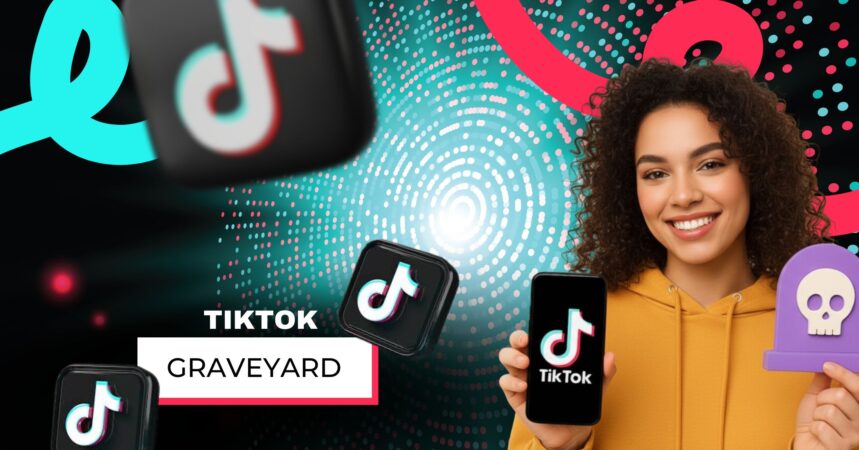
In the ever-evolving social media landscape, trends emerge, peak, and die — sometimes faster than you can double-tap on a photo.
But in 2025, something new and old-trendy is dominating TikTok feeds: the TikTok Graveyard.
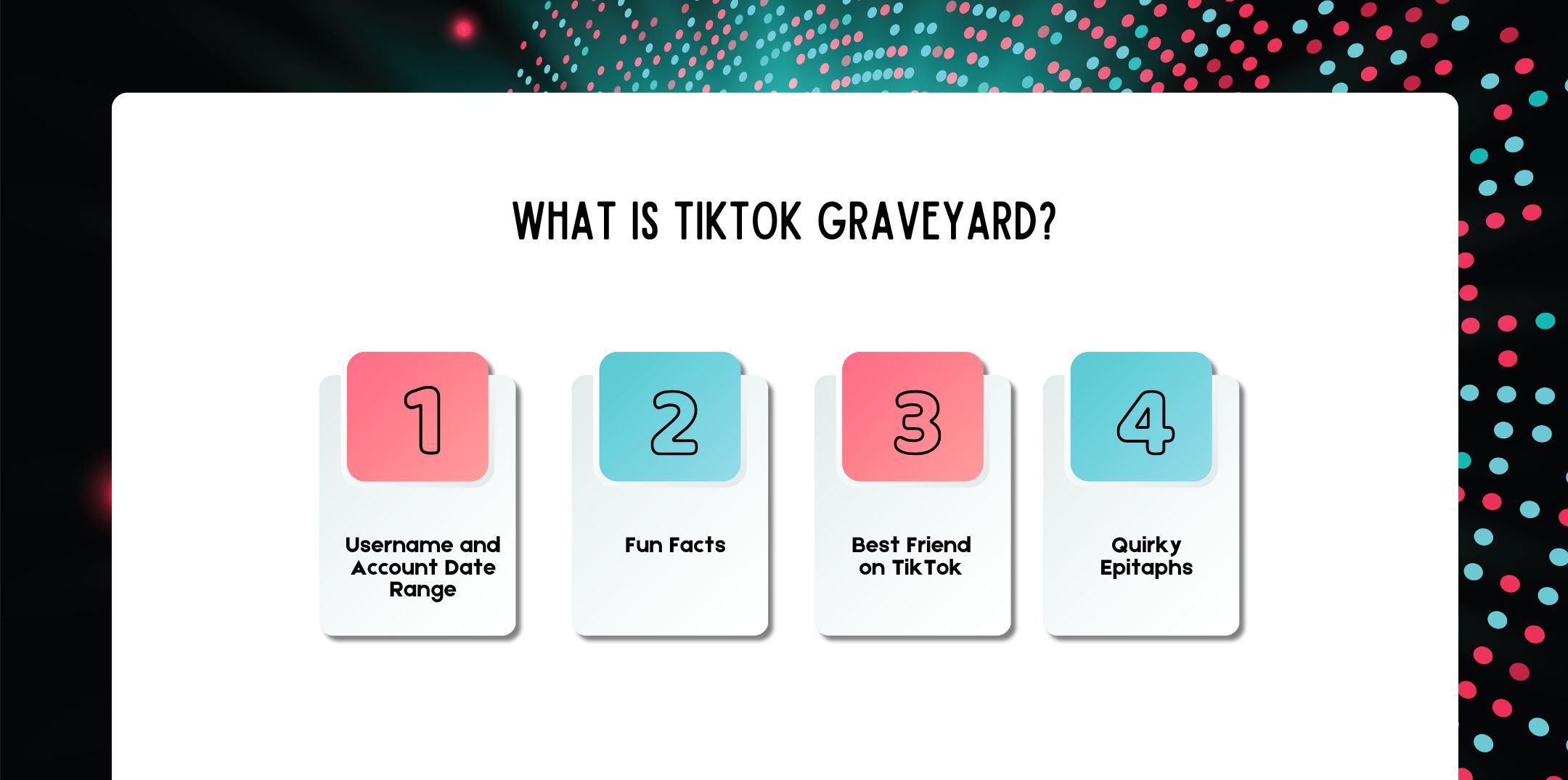
The TikTok Graveyard is a web-based interactive site (or “cyber cemetery”) where people can publish their TikTok details — that is, their usernames, likes, and comments, and post timeline — to create a cyber tombstone for their account. It’s equal parts sculpture, social commentary, and self-reflection exercise.
It’s a place where users “bury” their online personas — mostly their former selves when they first made the app.
From cringe dance routines, cringe lip-syncs, to disheveled 2020 lockdown videos, TikTok Graveyard lets users accept their online history through humor, imagination, and loads of self-consciousness.
It’s somehow where your TikTok persona is — not gone, but brought back to life.
Your username and join date appear on every virtual headstone in the TikTok Graveyard, where your “birth” and “death” as a TikTok user are indicated.
Like this:
Here Lies @vibing_queen_22 (2020–2024) “She did it for the algorithm.”
This small but powerful element gives the entire process a personal and historical touch. It causes users to reflect on their online history and reminisce about how far they’ve progressed — not only as developers, but as people in today’s ever-evolving internet era.
No surprise to spot other users who’ve “buried” more than one account here, particularly creators who’ve done rebrands, nuked old profiles, or simply needed a do-over following some experimentation across several years.
The TikTok Graveyard is far from ghoulish — it’s genuinely really strange and full of personality. Some fun facts regarding how users are making it their own:
The sarcasm, irony, and humor in such pages flip what would otherwise have been a gloomy concept on its side into something ironically celebratory — a way of making sport out of how fleeting internet celebrity and persona can be.
One of the sweeter things about TikTok Graveyard is the “Best Friend” page. Members can find the username of their best mutual friend — that guy or gal who they tagged most, hugged most, or just caught the TikTok wave with.
It adds a personal, borderline sentimental feel, reminding people that social media is not all about posts — it’s about connection.
Some of the tombstones even read:
“Interred with my bff @the_real_sam — we rode out 2021 TikTok together.”
Half nostalgia, half comedy, it captures friendships forged in trends, duets, and comment sections.
If the conventional tombstone sayings were poetic, wait until you scroll through TikTok Graveyard’s quirky epitaphs.
Any user can write their own obituary, and the ones that you see are both humorous and contemplative.
Here are some of the most viral examples:
These tombstones are a new kind of digital self-expression, presenting leaving a platform (or stepping off a stage) as an act of irony and beauty.
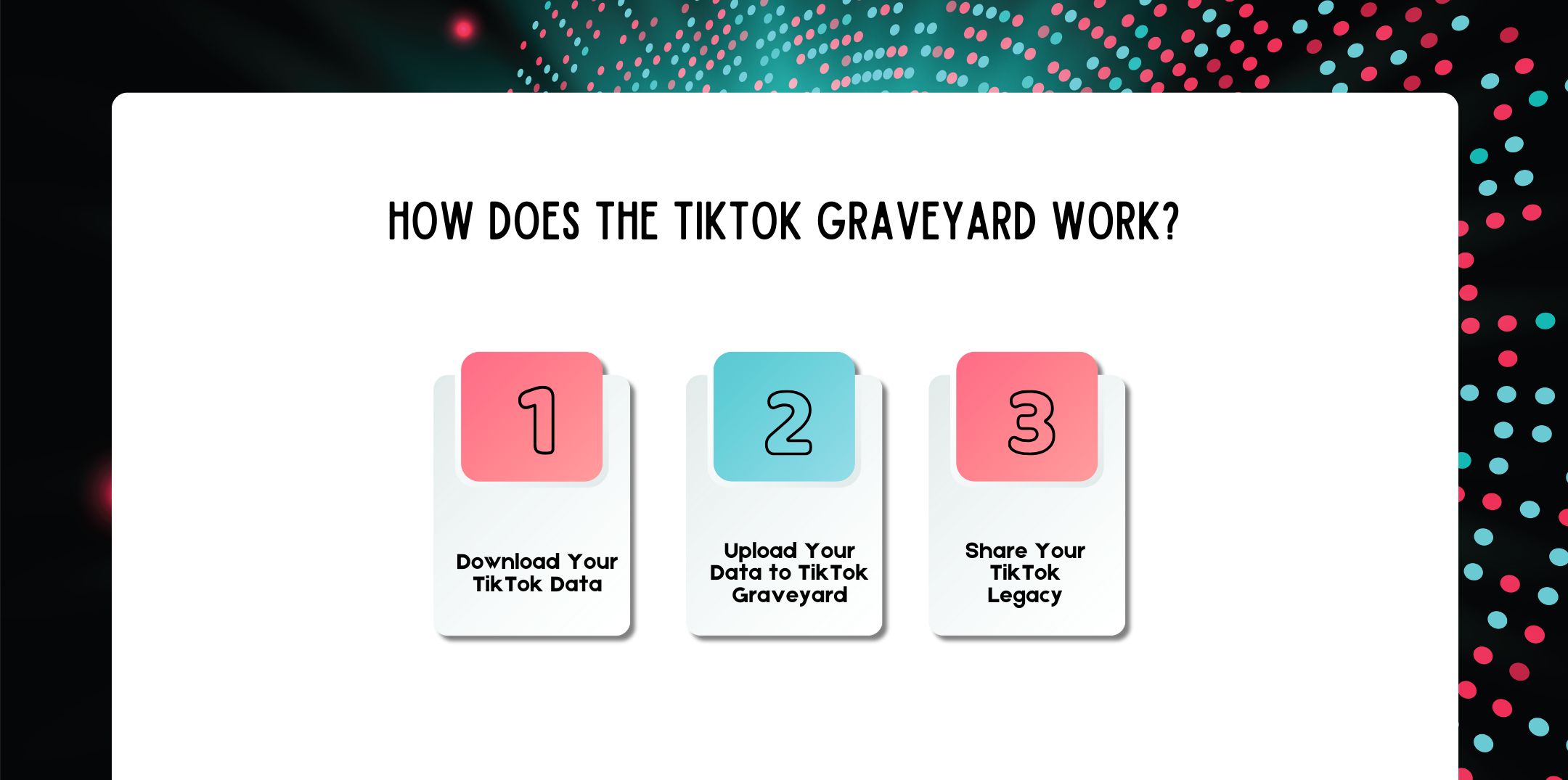
TikTok Graveyard is basically a data visualization website that transforms your TikTok history into a virtual tombstone all your own.
Here’s the step-by-step process:
You need to download your TikTok data directly from the app first.
This includes your:
TikTok provides this in the form of a ZIP or JSON file in the “Privacy” setting. Once downloaded, you now possess your entire TikTok history — ready to be uploaded.
Next, users visit the TikTok Graveyard web page or other app and upload their TikTok data file.
The program automatically reads your data and produces a customized “digital gravestone.” It includes your:
You can also include graphic personalizations — like graveyard themes (gothic, neon, retro), flowers, GIFs, or memes — making every gravestone an art piece.
Once your tomb has been built, you can share it on social media.
For most users, a link or screenshot is shared on their account with the caption below:
“My TikTok life is over. Stop by and see me at the graveyard.”
Sharing in and of itself is today a trend that artists use to close the ending of one chapter and the beginning of another. It’s an online closing ritual — akin to saving up past photos or shutting down a dormant Twitter account.
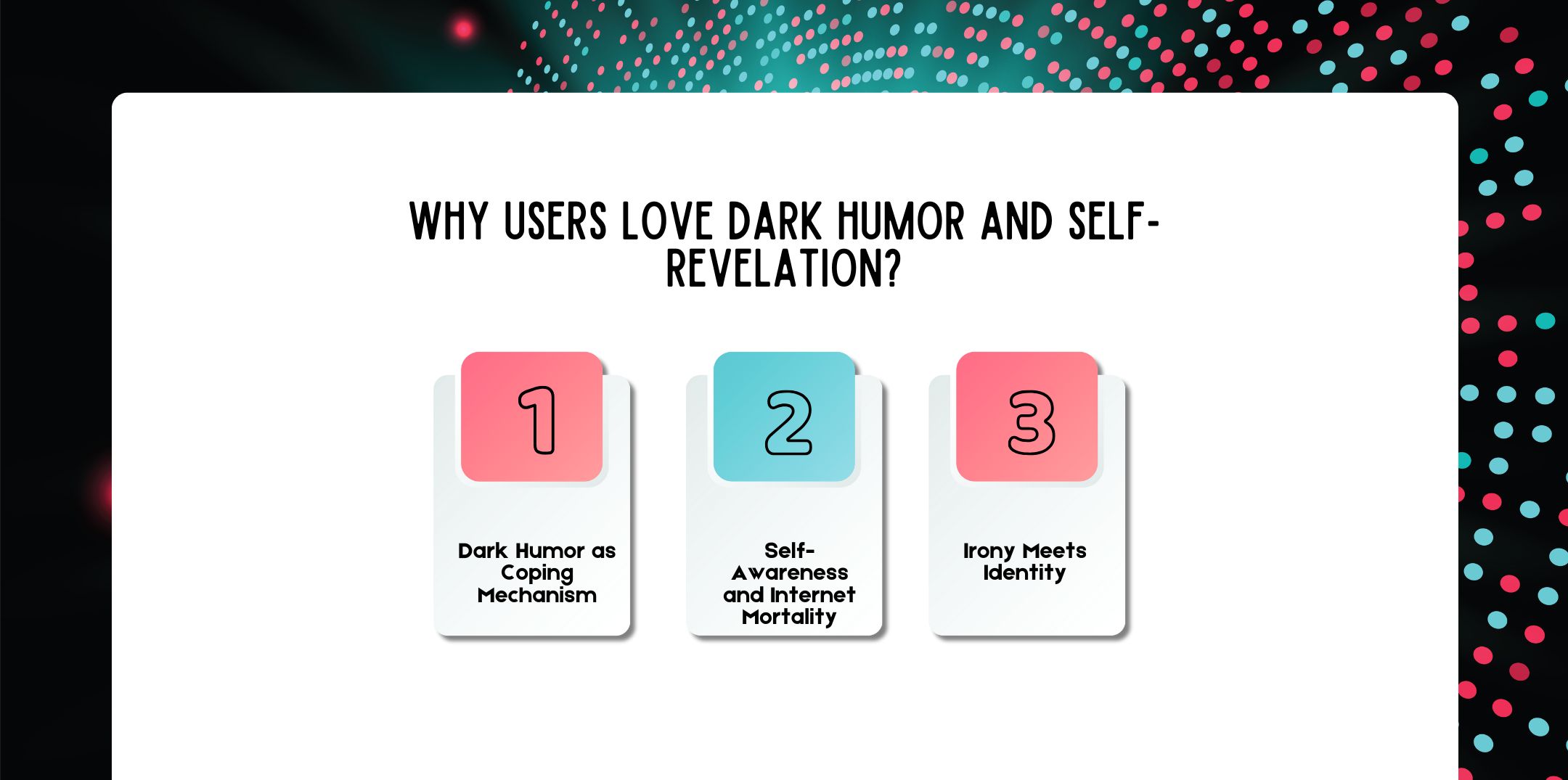
TikTok has long been a sanctuary for irony, humor, and emotional openness — and the TikTok Graveyard is the perfect combination of all three.
In a universe where we’re all desperate to have our online personas look perfect at all times, dark humor is a godsend.
To refer to your shutdown account as a “grave” isn’t merely amusing — it’s therapeutic. It permits us to deal with the strangeness of having more than one online existence.
The project also illustrates our growing awareness of “digital death” — that online trends, identities, and platforms have a finite shelf life. Folks aren’t just laughing at this truth; they’re accepting it.
By turning their accounts into tombstones, users regain agency over the terminus of their digital story — their own way.
Gen Z’s internet culture lives on irony. As much as this tragic act can be deleting your account, TikTok Graveyard makes it artistic, shareable, and self-aware. It is parody and earnestness in equal measure.
Beneath the memes and aesthetic, the TikTok Graveyard holds substance. It’s not merely a joke — it’s a reflection of digital culture, nostalgia, and subversion.
For many, creating a TikTok gravestone is a way of saying goodbye to part of themselves.
It may be the 17-year-old who filmed lockdown’s viral dances, or the university student who documented dorm life in vlogs. By preserving the moment, users can celebrate that virtual chapter before moving on to others.
It’s nostalgia in its purest, self-referential sense — a digital scrapbook for the TikTok era.
TikTok Graveyard also functions as a creative protest against how platforms use, manipulate, and sometimes erase user content.
When creators feel shadowbanned, overlooked, or algorithmically buried, they can symbolically “bury” their account themselves. It’s an act of digital rebellion — a way to say, “You can’t kill my creativity; I’ll do it on my own terms.”
In that regard, it’s a protest not of anger, but of artistry and wit.
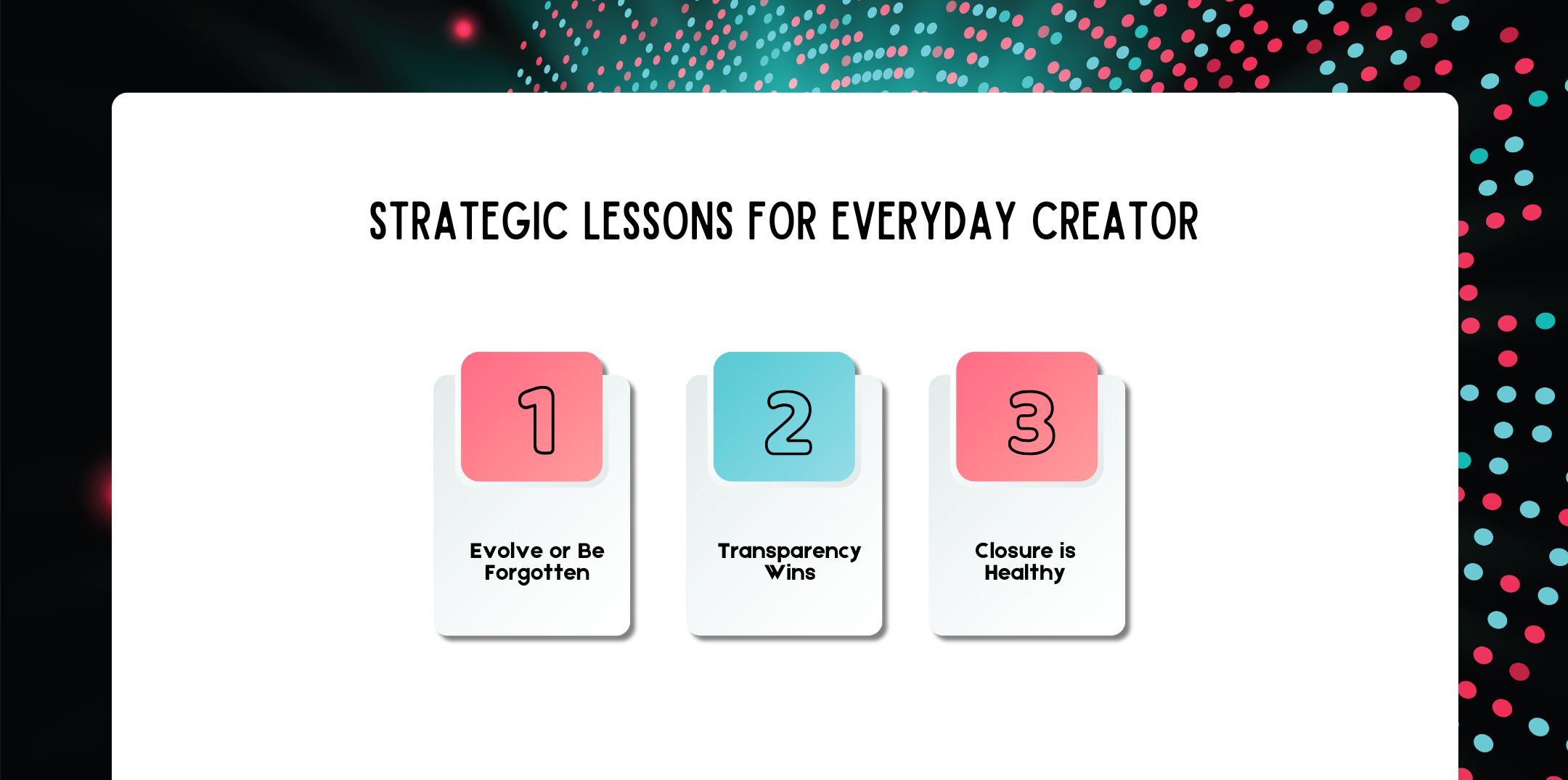
TikTok Graveyard also holds marketing and strategy lessons for successful creators.
The takeaway? Death (at least virtual) can be a trigger for rebirth — both artistic and tactical.
Shocked millions are jumping on this relatively spooky bandwagon? Here’s why:
Finally, TikTok Graveyard reminds us that while in the fleeting world of algorithms, your internet history matters — and for laughter.
Prefer to make your TikTok headstone more personal? Here are some guidelines on how to do it:
While the TikTok Graveyard is essentially innocuous amusement, here are some things worth keeping in mind:
The TikTok Graveyard is not a passing fad — it’s a sign of the way our interaction with social media is evolving.
In a time that asks us to create, perform, and get noticed constantly, this project gives us an odd good: the chance to stop, look back, and laugh at the fleeting aspect of it all.
Whether you’re employing it as a virtual diary, a piece of performance art, or a protest statement, the Graveyard is where art and end collide — a final swipe through who we once were before we become what we’re becoming.
Because on TikTok, even death gets to be viral — and sometimes that’s the most beautiful conclusion there is.
Additional Resources:
A self-proclaimed Swiftian, Instagram-holic, and blogger, Subhasree eats, breathes, and sleeps pop culture. When she is not imagining dates with Iron Man on Stark Tower (yes, she has the biggest crush on RDJ, which she won’t admit), she can be seen tweeting about the latest trends. Always the first one to break viral news, Subhasree is addicted to social media, and leaves out no opportunity of blogging about the same. She is our go-to source for the latest algorithm updates and our resident editor.

Subhasree Nag, 2 days ago

Subhasree Nag, 3 days ago

Subhasree Nag, 4 days ago